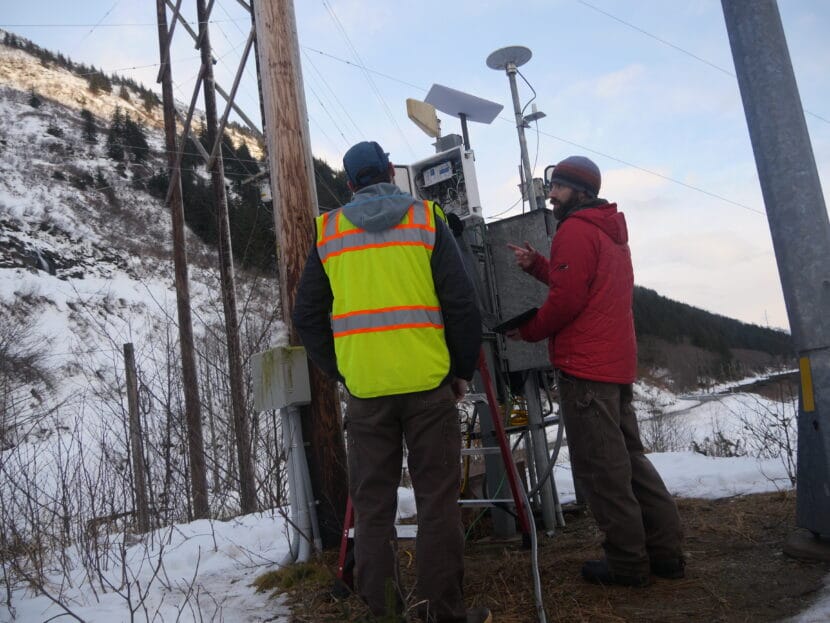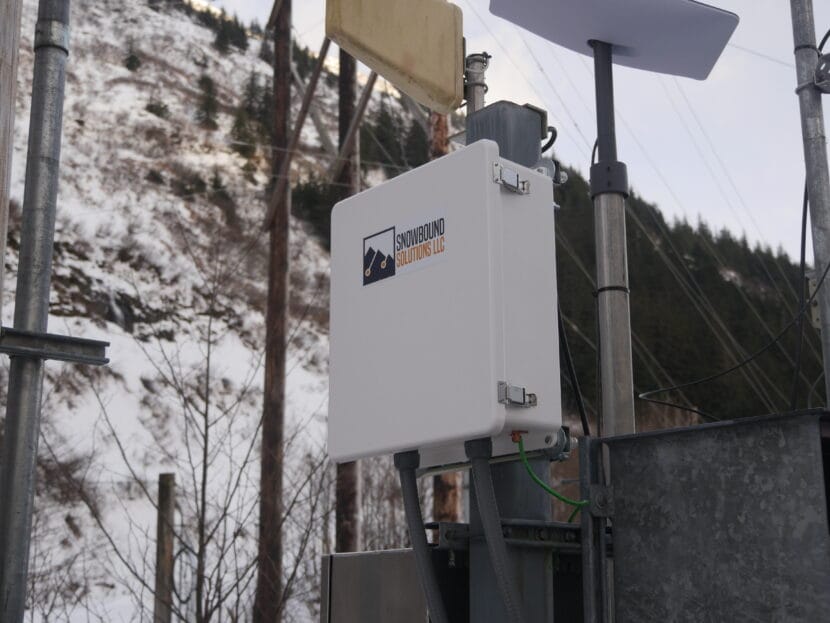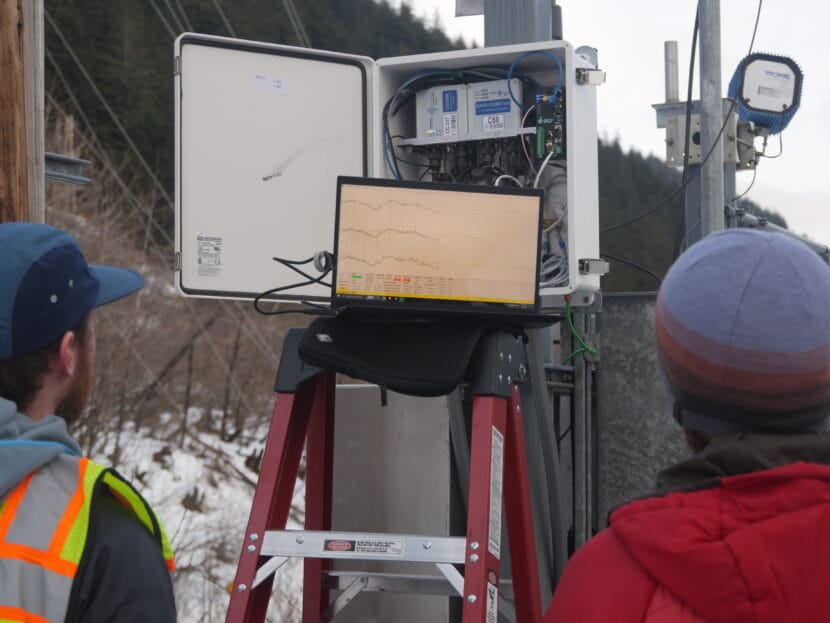
On a sunny February afternoon by the roadside of Thane Road, Scott Havens opened the door of a nondescript, white metal box to reveal a jumble of sensors and computer cables. Then he pointed to the steep slope of Mt. Roberts across the road.
“As the avalanche is coming down, it’s going to create that rumble that we’re picking up,” Havens said.
Humans can’t hear most of the rumbling generated by snow coming down the mountain because it’s infrasound — a kind of sound that’s too low-frequency for our ears to pick up.
Picking up infrasound could help Alaska Department of Transportation track high mountain avalanches that often go undetected. That in turn could improve their avalanche mitigation strategies and shorten the closures along Thane Road every winter.
All kinds of things generate infrasound. Similar detection systems have been used to keep track of volcanic eruptions and illegal nuclear weapons tests across the world. Havens’ company, Snowbound Solutions, is pioneering infrasound for avalanche monitoring using sensors developed with researchers at Boise State University.
The sensors measure the subtle changes in atmospheric pressure that are generated by every sound. On Thane Road, the challenge is distinguishing between noises like helicopters, cruise ships or the humming of the power lines.
“Like, we’re picking up this car that’s coming by us,” Havens said. “As it’s moving through the atmosphere, it’s emitting infrasound. And so with the array, we can basically track where that’s coming from.”

The infrasound detection boxes are arranged in triangles at the bases of different avalanche paths along Thane Road. Each triangle is called an array.
“The array works a lot like your ears. As the sound moves across the array, you can differentiate where the sound is coming from because it’ll arrive at each of those sensors at a different time,” Havens said.
And when the sound can be traced to somewhere up the slope, in an avalanche start zone, they’ll know it was an avalanche.
Snowbound Solutions has already deployed similar systems in Utah, California, Colorado and New Zealand. The system in Juneau, funded by a grant from the Alaska Department of Transportation, will be the first in Alaska.
Pat Dryer is the avalanche program specialist for the Alaska Department of Transportation on Thane Road. He says infrasound is part of the department’s larger effort to develop an avalanche monitoring and warning system on Thane road.
According to Dryer, “hearing” avalanches with infrasound is crucial because it’s often impossible to see them. Most don’t make it all the way down to the road. They happen high up the mountain, where storms can cloud visibility, or they happen at night.
“We’re assuming that avalanches are occurring, or we’re predicting that they are occurring, but not having that positive feedback loop that something is happening,” Dryer said.
Dryer said that over time, the record they’ll build of when avalanches happen and in what weather conditions will help improve their avalanche forecasting.
“We can start to make some assumptions or even predictions of when they’ll occur in the future,” he said. “So that we can better refine our methods of managing that hazard or closing the roadway.”

More data will also help Havens refine the technology so it may be possible to identify avalanches not just by their location, but by their distinct soundwaves. Avalanche infrasound does have a kind of recognizable rumble, but the signal still varies a lot based on the type of avalanche and its size.
“So yeah, we’re hoping to figure out what an avalanche sounds like? Like, what is the kind of characteristic signal,” Havens said. “If we can apply some fancy machine learning or AI algorithms, can we start picking out and classifying these better?”
And in the future, Havens said, infrasound detection could be used to monitor hazards like rockfalls and landslides too.





